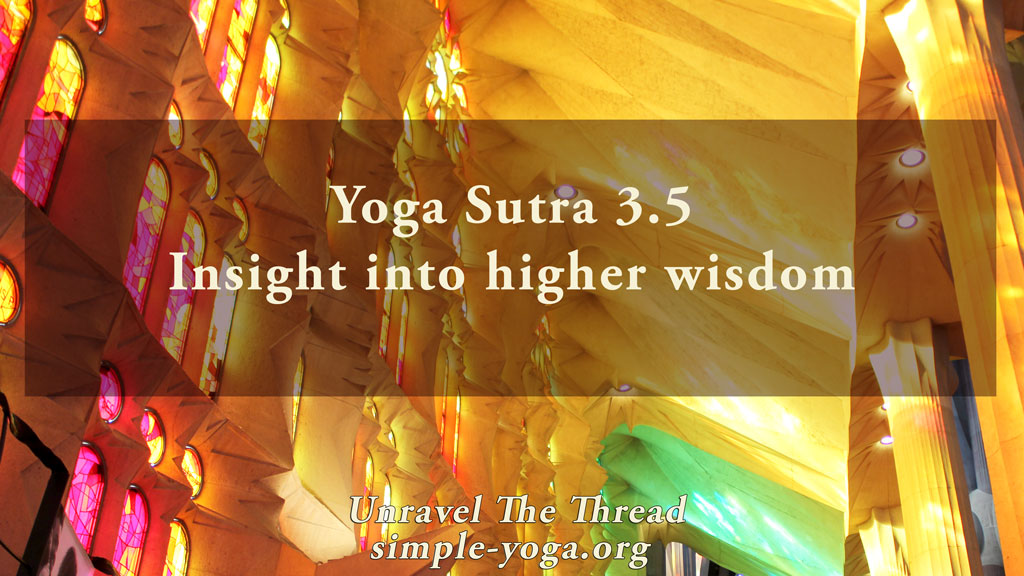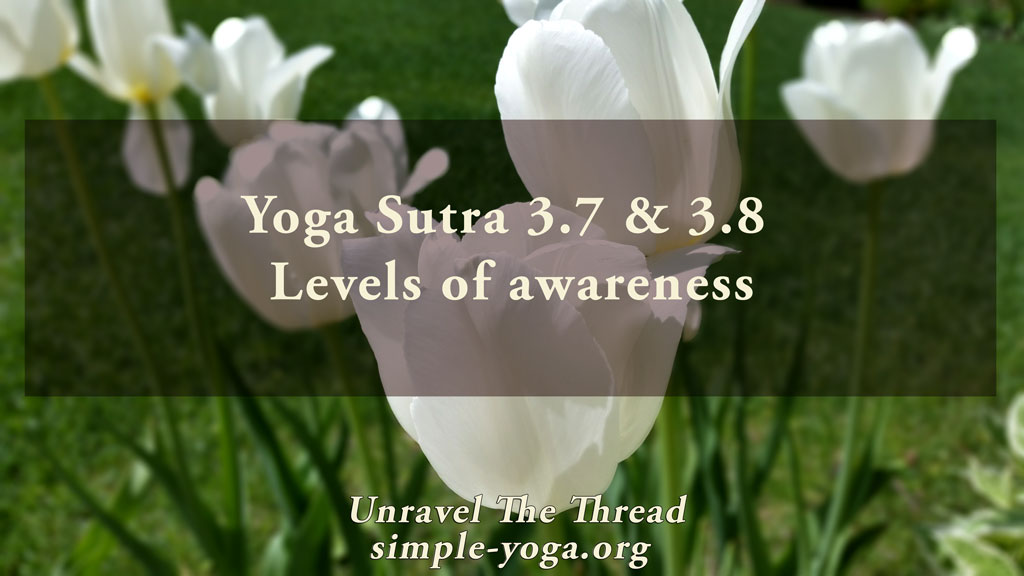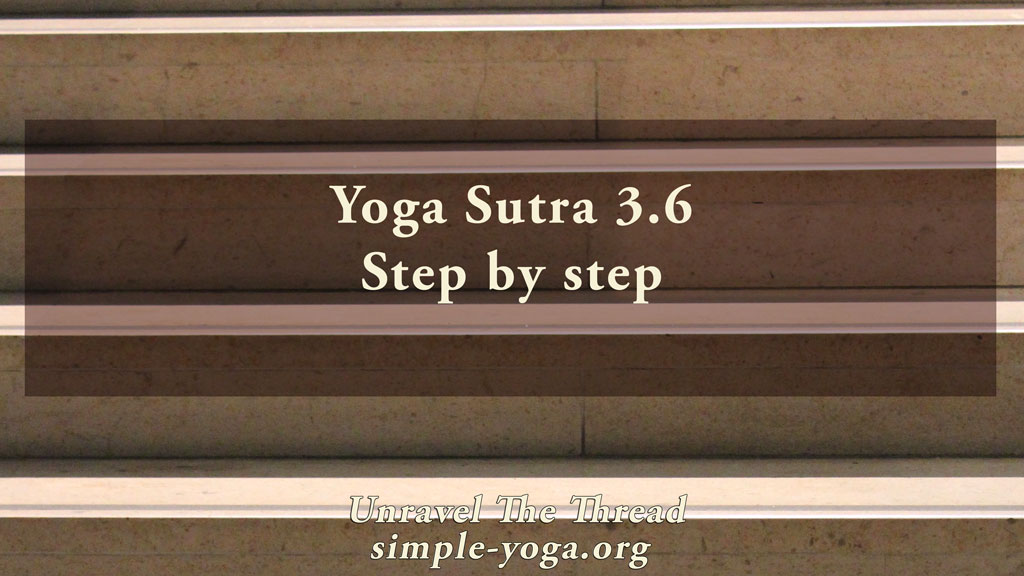
3.5 Insight into higher wisdom
July 1, 2021
3.7 & 3.8 Levels of awareness
July 8, 2021
3.5 Insight into higher wisdom
July 1, 2021
3.7 & 3.8 Levels of awareness
July 8, 20213.6 Step by step

3.6 Meditative integration (samyama) unfolds gradually.
When you are learning to ride a bicycle, you often start with somebody guiding you, with training wheels attached to your bike, practicing in a space with no traffic and minimal distractions and obstacles. Once you can keep your balance, you may remove the training wheels and gradually you start venturing out into different areas and terrains. It is common sense to start under conditions that will enable you to succeed. However, this is not an invitation to be complacent. This sutra is a reminder to practitioners that all of yoga is a process resulting from consistent practice (abhyasa & sthira) balanced by easefulness and moderation (vairagya & sukha). There are no shortcuts in yoga. Attachment to outcomes often results in trying to skip steps. This is a major cause of frustrations, distractions (1.30), injury and suffering. Thinking that yoga is a practice to transform you into something different from who you really are is the cause of suffering that can be avoided (2.15 & 2.16). Yoga is not trying to add something to you. In fact, the Yoga Sutra has been saying from the very beginning (1.3 & 1.4) that modulating and eventually releasing your ways of being will lead you into experiencing your true nature.
In this journey towards embodying awareness, you take one step at a time with patient persistence (1.12) and with the appropriate intensity (1.22). To be successful, it is most helpful for you to know your tendencies and your abilities so that you can choose intelligently the tasks that will help you grow in your abilities without causing strain or injury. The skill of concentration can be honed through consistent practice, so that meditation starts to happen organically. Your motivation is fundamental to keep you returning to your goal, especially when you get distracted. The general approach is to do the best that you can as consistently as you can, while setting aside your expectations (vairagya). As you keep doing the best that you can, your dedication causes your best to change incrementally. To soften the grip on expectations it may be helpful to consider that the results of samyama, just like the results of any other meaningful action, are not immediate. Moreover, the process of samyama itself is a gradual distilling of attention from a gross object towards increasing levels of subtlety (1.40 to 1.51). As you try to practice, notice if your sensitivity is growing so that your attention goes from the superficial features of your focal point towards its subtle aspects and eventually into its essence. Similarly, pay attention to noticing if insight and intuition are growing.
Is there a sense of flashes of clarity delivering suggestions for action?
Do you feel like you are receiving subtle guidance during your day?
Are you letting go of your desire to become?
How are you keeping your expectations in check?
As usual, one more way of exploring the meaning of this sutra is by chanting it.
3.6 tasya bhūmiṣu viniyogaḥ
तस्य भूमिषु विनियोगः ॥६॥
- tasya
- bhūmiṣu
- viniyogaḥ
If you prefer, you may listen to the podcast:
Unravel the thread is now available as a book!
If you find Simple-Yoga.org and Unravel the thread useful, consider supporting my labor with a donation, you may also donate using PayPal or Venmo. Thank you!
